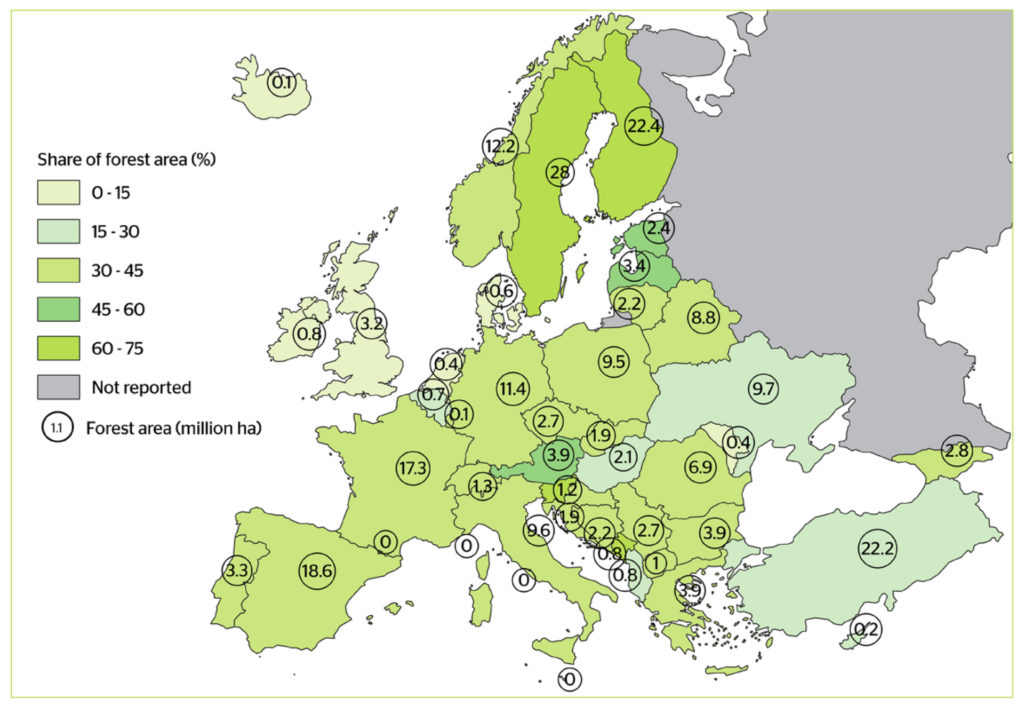A Forest Worth Knowing
The EU’s Forest Monitoring Directive aims to improve the monitoring of forest conditions and enhance our understanding of how such monitoring underpins sustainable forest management and protection.
In 2023, the European Commission introduced an ambitious proposal; a Monitoring Framework for Resilient European Forests. While at first glance, it might sound technical and complicated, the directive aims to be a turning point in how Europe cares for one of its most valuable natural assets.
What is the Monitoring Directive about?
In the heart of the proposal lies a powerful idea: If we want to protect Europe’s forests, we first need to truly understand them. The directive aims to create an EU-wide, high-quality, harmonised forest monitoring system – one that reflects the many roles that forests play in our lives and the challenges they (and we) face from climate change, biodiversity loss, and unsustainable management.
The monitoring system would track a wide range of indicators tied to EU policy goals spanning forest health, biodiversity, carbon storage, invasive species, and land use. It’s not just about counting trees, it’s about seeing the forest in all its complexity.
Why is it needed?
Data on Europe’s forests is often scattered, outdated and inconsistent. Definitions vary between Member States, and many monitoring systems fail to capture the full ecological, social, and economic value of forests. This situation leaves major blind spots at a time when forests are increasingly under pressure from fires, droughts, pests, and ever-growing demand for natural resources.
A harmonised monitoring framework would help close these knowledge gaps. It would also make it easier for countries to plan climate-smart forest strategies, meet EU climate and nature targets, and share insights across borders. Better data means better decisions for policymakers, ecologists, entrepreneurs, and citizens alike.

The plan to make forests resilient
The directive covers three elements:
- A geographic identification system to map and localise every forest unit across the EU
- A data collection framework to standardise how, when, and what is monitored
- A data sharing system that allows Member States to exchange and publish key information
The aim is to create a shared foundation reflecting ecological realities and policy priorities. From carbon sinks to forest fire risks, from old-growth forests to riparian ecosystems, the framework intends to provide the clarity needed for smarter, long-term forest planning.
Room for improvement
Despite being ambitious, the proposal leaves some important elements out. More data on soil health, forest species, and ecosystem services is needed from an environmental standpoint – especially those indicators the EU must report under global biodiversity frameworks. Forest structure, connectivity, and the condition of Red List habitats and old growth areas should be better integrated, not just mapped, but monitored over time.
Economically, the framework focuses heavily on wood production but misses the opportunity to gather more nuanced data on how forests are managed in protected areas or under EU nature laws.
Socially, it overlooks the importance of Indigenous and forest-dependent communities and how their traditions and rights intersect with forest use.
And when it comes to species monitoring, the EU has an opportunity to lead by embracing AI-powered tools that are already transforming biodiversity tracking, making it faster, more accurate, and more cost-effective.
What happens next?
To truly support forest resilience, the monitoring law must evolve into more than just a technical tool; it needs to be a strategic pillar. The WWF , Fern and EUSTAFOR have called for stronger integration with existing EU laws, more attention to forest connectivity and naturalness, and regular public updates on forest ecosystem services.
One of the most promising aspects of the proposal is the call for Long-Term Plans from Member States. These would be shaped by the new monitoring data and tailored to each country’s forest context. The level of detail may vary – between Finland and Malta – , therefore the benefit of informed, strategic forest planning is global.
At a time of climate urgency and ecological breakdown, Europe’s forests are both a refuge and a responsibility. The Forest Monitoring Directive promises the tools to understand, protect, and restore the landscapes we depend on. With a few additions, it could become a cornerstone for protecting Europe’s forests, making sure that they are seen and cared for.